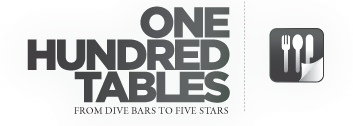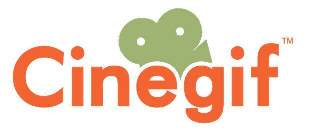 A Q&A with One Hundred Tables co-founder Tony Akston. The Atlanta-based startup, which is a city-by-city, curated directory of popular restaurants arranged by lists of 100, launched to the public earlier this month. It was founded by Akston and Alejo Cadavid.
A Q&A with One Hundred Tables co-founder Tony Akston. The Atlanta-based startup, which is a city-by-city, curated directory of popular restaurants arranged by lists of 100, launched to the public earlier this month. It was founded by Akston and Alejo Cadavid.
SUB: Please describe One Hundred Tables and your primary innovation.
Akston: Onehundredtables.com repositions the way restaurants can be discovered and showcased. Instead of simply creating a ‘top ten’ list or even listing them at all, we decided to reframe the way great restaurants could present themselves to the world in a far more visual way. It’s on their own terms and part of a collection of dining experiences running from dive bars to five stars—which is a more realistic reflection of the way people who care about great dining experiences actually eat. In short, we wrote our own rules on how diners and restaurants can find each other online and then in the real world.
SUB: Who are your target markets and users?
Akston: Our target is great and unique restaurants in 100 cities worldwide. The users are the foodies everywhere who want to discover fabulous dining experiences in their hometowns or when traveling. The people who would use Onehundredtables.com are the people who might like, for instance, a great local food truck for lunch and then might end up at the best restaurant in town for dinner.
SUB: Who do you consider to be your competition, and what differentiates One Hundred Tables from the competition?
Akston: While nothing like what we created exists, the best way to put it in context would probably be to say that for restaurants we’re the alternative to Yelp.
The first thing that differentiates Onehundredtables.com from Yelp is that we limit each city to 100 restaurants. Nobody really wants to look through 3,743 restaurants in any given city when they really just need one place to go, so we decided to simply produce an original collection of 100 surefire dining experiences in each city. Filter my decision and just give me 100 great choices.
Second, in order for a restaurant to be on Onehundredtables.com, it must have a minimum of 250 ‘Likes’ on its Facebook page, or be manually approved where we validate the restaurant in other ways—are they ranked high on TripAdvisor, for example. We do this to have a basic quality ‘entry point’ based on the experiences of the people who would best be in a position to rate a dining experience—the people that ate there. And the reality is most of the restaurants on Onehundredtables.com have far more than 250 Likes, usually going into the thousands. If a restaurant has this many Likes, they must be doing something right with the people that count—the diners.
Third, there are no restaurant reviews on Onehundredtables.com—we’re not a review site and they’re not needed anyway because every place on Onehundredtables.com is good. Period.
SUB: You just had your official public launch. Why was this a particularly good time to launch?
Akston: We went live in February, 2013, but operated under the radar for the first six months on purpose. We launched with six cities to learn what works and what doesn’t and sort of get our sea legs. Now that we have a good handle on this, we’re up to 17 open cities. Now was a good time for us to announce it to the world because there are now great restaurants, content and activity in each open city. It was time to get the word out, and we chose mid-September to announce because by-and-large the world is back from their Summer breaks and focused on work.
SUB: What are your plans for rollouts in other cities, moving forward?
Akston: We’re now up to 17 cities with plans to have 20 open cities by the end of September, 30 open cities by Thanksgiving, and 40 open cities by the end of the year. This will cover every city we have planned for the USA and Canada, plus the additions of London, Cape Town, and Tel Aviv, as we stretch more into overseas markets.
In 2014, you will see us open about 25 European cities, then set the stage to open cities in Latin America, Asia, and Australia on our way to 100 open cities worldwide. Opening a city is not hard—it’s literally the flip of a switch and the city is open for business. The real work around opening a city is knowing the restaurant scene in each city. The most interesting thing I see happening is that the personality of each city is reflected in the restaurants you see adding themselves to the site. It’s kind of cool because you can really sense the feeling of city by their restaurants.
SUB: Have you raised outside funding to this point?
Akston: No. We are self-funded.
SUB: What was the inspiration behind the idea for One Hundred Tables? Was there an ‘aha’ moment, or was the idea more gradual in developing?
Akston: Yes there was an ‘aha’ moment. I had the idea in my head already to build an online platform that was around travel and dining when I stumbled upon an article in Bloomberg Businessweek on the ‘World’s Top Most Livable Cities.’ Instantly, everything came together in my head on how to do it. Livable cities have lots of nice things like schools, hospitals—and restaurants. I looked at the list and tweaked it a bit before coming up with the final 100 cities.
SUB: What were the first steps you took in establishing the company?
Akston: I laid out the idea on paper, sketching out what the city grid would look like. Then, I went on a hunt for a business partner who could bring to the table the technical chops to actually build it. After three months of no success in my search, I had lunch with a close friend of mine who owns HypnoticMedia.com who told me, “I have the guy for you,” and he introduced me to my now business partner Alejo. After a couple of meetings, we decided to partner up and get busy. We created the company, fleshed out the technical wire frames, and got to work.
SUB: What have the most significant challenges been so far to building it?
Akston: Building the site and the backend was fairly easy only because we really took the time to lay out the flow of the platform, the design direction, and the vision of what it was supposed to do. The site and the back-end had to be 100 percent custom-made to our specs, and even though it was more expensive, we made the decision to build Onehundredtables.com in Python. It took us six months to go from step one to live.
The biggest challenge I think we have in growing the business is simply getting the word out. Things like Yelp and OpenTable are huge compared to us at the moment, so we’re a bit of an underdog. The key has been the early adopter restaurants that get what we’re doing, who like what we’re doing, and who like the way we make them shine. They know they’re a part of something fresh.
If you think about it, it really is a no-brainer for a restaurant not to be on board with us. A restaurant’s total risk with us is $100. If we send them one table in a year’s time, they’ve made their money back. What if we send them just ten or 20 new customers? I sometimes joke with the restaurant owners that it’s 27 cents a day for them to have a spot on Onehundredtables.com—the butter on the table costs more.
SUB: How do you generate revenue or plan to generate revenue?
Akston: We’ve been generating revenue since day one. Our business model can be laid out in a single tweet: ‘100 cities, 100 restaurants per city, $100 a year.’
Our core business is $1,000,000 a year in revenue when sold out—100x100x100. From a business point of view, it’s ideal. We have no inventory, no accounts receivables, and at any time while there is a space available in any city, a qualifying restaurant can simply add themselves to the platform and automatically go live in about five minutes. The more restaurants that hear about us and see the value received for the price of admission, the more that join. Our goal is not to get every restaurant in a given city, but rather to create the most unique collection of great dining options in the world. When a city gets to 100 restaurants it goes to waiting list.
SUB: How did you come up with the name? What is the story or meaning behind it?
Akston: Restaurants often refer to their ‘room’ in terms of ‘tables,’ as in “How many tables have we got tonight?” One Hundred Tables is our way of saying: “One Hundred Great Places to Eat Out.” It’s something both restaurateurs and foodies alike understand.
SUB: What are your goals for One Hundred Tables over the next year or so?
Akston: I see this in four phases. Phase one is happening now and that is onboarding great restaurants. Phase two will be an app for anyone to download and just ‘know where to go’ as they travel around the country or the world. Phase three will be really creative city sponsorships where we might ‘sell’ the background to each city to a high-level advertiser who would own the city background for a period of time on the city—or cities—that they want to gain awareness in. Phase four will be an original TV show called ‘One Hundred Tables’ where we can create a show around travel and dining and feature the restaurants seen on Onehundredtables.com.
One Hundred Tables – www.onehundredtables.com












